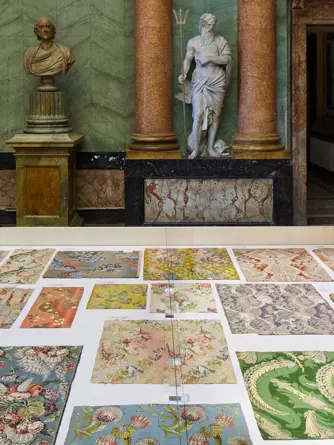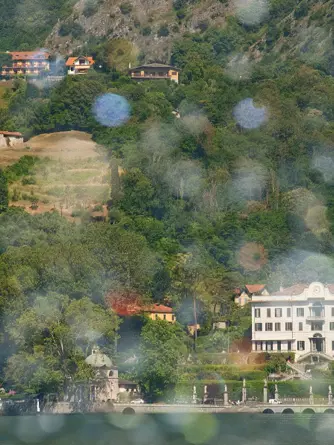The Middle Ages In Technicolor
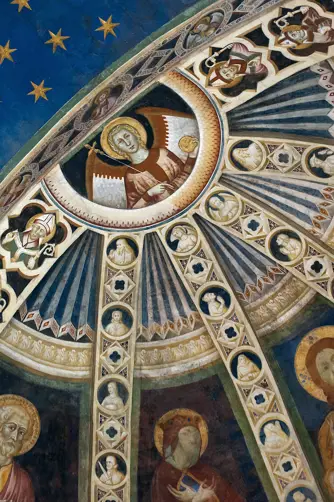
They are among the most important pictorial cycles in all of Northern Italy, the amazing fourteenth-century Sant’Abbondio frescos.
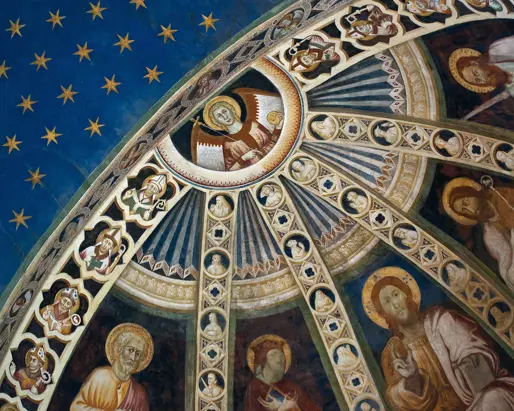
To lose ourselves in such beauty, we must first walk through the streets of Como until we reach the imposing stone walls, originally commissioned by Julius Caesar, that have surrounded its historic center since the first century BC. A few steps from there and we are standing in front of a magnificent Romanesque church, in front of a true masterpiece. Marco Carminati, art historian and editor of Domenicale, the arts & culture supplement of Il Sole 24 Ore, is here to help us discover it.
Such an important church located outside the city walls. Why is that?
Marco Carminati: The stunning Basilica of Sant’Abbondio is no exception – in fact, more often this was the rule during the early days of Christian history. Christianity began on the fringes, far from the center of pagan power. It had to set itself apart, to blaze a new trail. St. Peter’s Basilica in Rome was built outside the city walls, as was St. Paul’s Basilica, known still today as “Basilica di San Paolo Fuori le Mura” (outside the walls). Unable to escape its destiny, the Basilica of Sant’Abbondio, Como’s most famous medieval cultural monument, was built far from the vestiges of Roman civilization.
What part of history are we talking about?
M.C. We are in multiple historical eras, as often happens in Italian art history. The oldest part of this church dates back to the fifth century, but it wasn’t until 818 that it was dedicated to Bishop Abbondio, who had already been canonized and named the city’s patron saint. Two centuries later, in 1013, Bishop Alberico moved the cathedral inside the city walls, entrusting the old church complex to an order of Benedictine monks, who rebuilt it in the Romanesque style between 1050 and 1095. We know when it was consecrated – in 1095 – and we know that Pope Urban II presided over the ceremony. So, it’s fair to say that the Church of Sant’Abbondio was a highly prestigious institution.
"Just look at Sant’Abbondio – the entire building is a triumph of colors and vitality."
Maybe the master craftsmen got the measurements wrong?
M.C. Actually, no. This is another example of the intended symbols that we often see in Romanesque churches: Mankind was not meant to be perfect. It would be an act of supreme arrogance to design a perfectly symmetrical façade. Only the divine can aspire to perfect symmetry. And the Maestri Comacini, following the instructions of the monks, deliberately introduced an error in the calculations. Now let’s go inside, where the splendor of the fresco cycle awaits us.
We are standing in front of a true masterpiece, though one that is not very well known.
M.C. Sant’Abbondio has one of the most important Lombard fresco cycles of the 14th century – an absolute must for visitors eager to discover the true beauty of Lake Como and the culture that emerged on its shores.
Who were the artists that created the cycle?
M.C. These frescos were probably painted by a team of artists, led by a “capo bottega” or head of a workshop, as was often the case at the time. We don’t know his name, but we do know who commissioned this important work: Leone Lambertenghi, Bishop of Como from 1315 to 1324. Giotto’s example was spreading like wildfire across Italy at that time, from Florence to Padua, to Rimini and even to Milan, just a few kilometers from here. Today, we attribute these frescos to the ‘Maestro di Sant’Abbondio’, an artist who almost certainly was aware of the novelty of Giotto, the vitality of his art that breaks with the firm, rigid rules of the Byzantine tradition. It can be seen in each of the episodes that depict the life of Christ, from Mary’s annunciation by the angel Gabriel and Mary’s visitation of Elizabeth to the birth of Jesus and the adoration of the Magi continuing through the presentation of Jesus at the temple, his entry into Jerusalem, the betrayal of Judas and the story of the passion and the crucifixion.
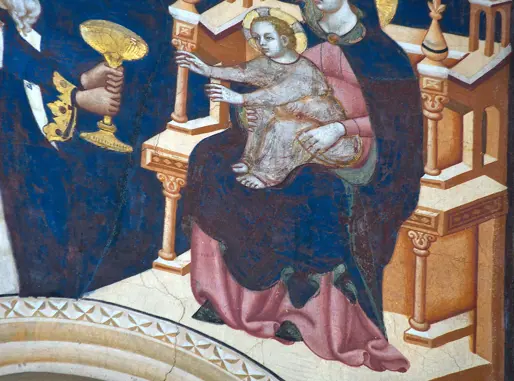
And every scene is integrated into the complex architecture
M.C. Yes, this cycle is spectacular in all its decoration, from the pillars to the starry vault. In fact, the architecture of the vault and the apse are even enhanced with ‘fake’ architecture, for example the corbels with the apostles facing one another, no two of which are alike. Here too we sense Giotto’s teaching. There are traces of the Roman Empire as well, where the artist of the Sant’Abbondio cycle paints fake marble slabs to give the church the esteem of the ancient monuments.
How did these artists work?
M.C. They worked as a team but managed to create a uniform image, as if it had been completed by one in the same artist. There is also a chromatic uniformity as well, due to the simple fact that the pigments were ground by a single craftsman and handed out to the painters. Even the figures within the paintings are all the same size, because the artists were given cardboard templates, so-called ‘patrones’, which allowed them to work on different levels of the cycle at the same time. When we imagine these painters, we should picture them not only toiling way on their scaffolding but also eating their meals there, so as not to waste time. And sometimes, truth be told, they may have even been drinking on the job. There are more than a few stories in the chronicles about drunk craftsmen falling off a scaffolding.
In other words, a pretty colorful existence…
M.C. Absolutely! To those who think the Middle Ages were gloomy and dark, I say think again. Just look at Sant’Abbondio – the entire building is a triumph of colors and vitality.
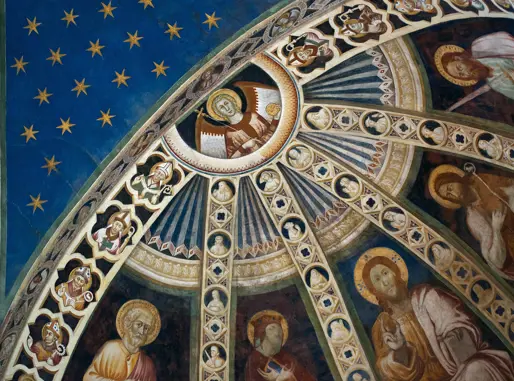
But what role did the Benedictines play?
M.C. In the fateful year one thousand, the Benedictines were an extremely important monastic order in Europe with contacts across the continent. This explains why our church is not only a masterpiece of Comacina architecture, but also displayed elements of the Northern European tradition, above all the upward thrust. We are talking about double-tier heights that allow the artists to ‘extend’ the fresco cycle. In addition to this innovation, which also includes the twin belltowers, there are distinctive canonical elements such as the apse’s eastern orientation, facing the East where the sun rises – and where Christ ascended into heaven. But before we enter the church and discover this extraordinary fresco cycle, let’s spend another moment before the façade, looking at the portal. When you try and line it up with the apse, you realize you cannot – a slight misalignment makes it impossible.

